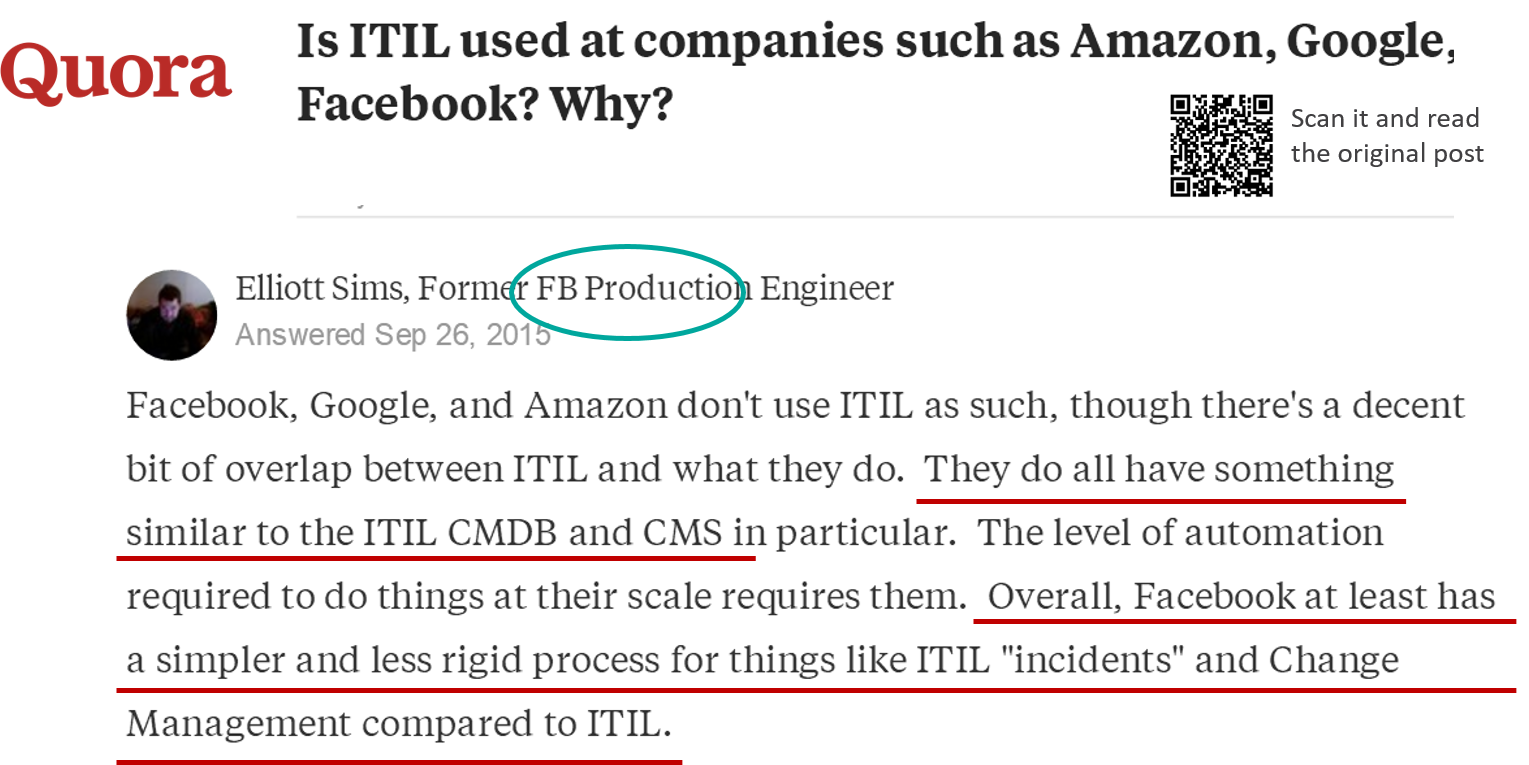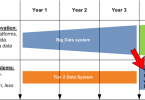You may have heard at various times over the past several years, as digital transformed the service era from on-premises-based software solutions to modular, user-friendly, often cloud-based ITSM solutions, that ITIL was poised to perish. With its taut regulations and process steps that complement the rigorous but often slow, methodical nature of traditional software development, and with the accelerating popularity of DevOps, a fast and furious software development methodology aligned to business goals, it seems ITIL’s nail-in-the-coffin may simply be awaiting the hammer.
Or is it?
Download Now: ITIL 4 Best Practice e-Books
These all-new for 2020 ITIL e-books highlight important elements of ITIL 4 best practices. Quickly understand key changes and actionable concepts, written by ITIL 4 contributors.
While DevOps offers distinct advantages in today’s race-to-the-finish-line development environment, ITIL offers more proactive and transparent processes to ensure stronger products. Additionally, a new version of ITIL is set to be released in just a few months, and may indeed address many of the current issues raised by DevOps evangelists.
So is DevOps the end of ITIL? Or is there a place for ITIL in today’s demanding DevOps environments? In this two-part post, we’ll look in-depth at how both methods offer IT and the business discrete advantages, how Agile development methods can be applied to ITIL to create a new framework for production teams, and the types of products and solutions BMC offers that can enable transformation to Agile ITIL.
ITIL or DevOps?
In recent years, DevOps has become incredibly popular in IT and software development environments, to everyone from the CIO down to IT engineers. Its rising usage is fostered by various industrial pain points:
- The long cycles of traditional software development models, such as waterfall
- The difficulty of cooperation and collaboration between development and operations teams due to their discrete responsibilities
- The stability and control needed by operations teams in the production environment, generally complicated by bulky bureaucratic processes (typically ITIL)
Many evangelists claim that DevOps and cloud together are the future of IT operations management, and ITIL will die. However, this argument supposes that this solution is without its own problems and sacrifices—which isn’t the case.
After experimenting with DevOps and experiencing various degrees of difficulty and unforeseen complications, many companies despondently discover that DevOps is not the silver bullet for IT operations and maintenance, and does not provide a truly systematic solution.
Why DevOps won’t replace ITIL in operations management and service support
(1) DevOps doesn’t provide a methodology for operations management
In theory, DevOps’ major recommendation for operations is to integrate the development and operations roles into one team to eliminate organizational barriers and unify roles and responsibilities. However, DevOps does not provide any advice for how the integrated DevOps team should manage its operations.
For any crucial business application, even if the operation is as limited as the redefinition of a personnel role, or rotating developers to a new task, if there is any lack of corresponding strategy, defined procedures, or management control, ITOM will return to the state of chaos that ITIL was created to handle. No one is responsible for long-term quality of service, and no management framework is established to organize internal collaboration and improve the quality of operations.
When adopting DevOps, organizations recruit “DevOps engineers” and “full stack engineers,” who are often simply former software development engineers themselves. Their skills have not changed, their learning ability has not changed, the requirements for domain expertise have not changed—so what makes DevOps a magic wand? Can DevOps obviate the basic management methods of operation specifications, control procedures, and management processes?
Operationally, DevOps advocates implementing CI (Continuous Integration) and CD (Continuous Delivery). Even though many people interpret CD as Continuous Deployment, it is the first step for a new software product to enter the production environment and start to run. But there is no concept like CO (Continuous Operation) in DevOps to cover the managing operation phase.

As a result, the DevOps framework does not involve adequate operations management and service support.
(2) The main founders and evangelists of DevOps suggest the integration of DevOps and ITIL

In the widely circulated DevOps evangelist novel The Phoenix Project, the author Gene Kim specifically explores the relationship between DevOps and ITIL. In the book, he argues that ITIL and ITSM are still the best codifications of the business processes that underpin IT operations and actually describes many of the capabilities needed in order for IT operations to support a DevOps-style work stream.
(3)Many well-known internet companies use a combination of ITIL and DevOps to achieve orderly and efficient operation and maintenance
On Quora, the world’s leading knowledge-sharing website, the question of ITIL’s continued relevance has been a common subject of debate. One of the questions and its response is shown here, demonstrating that some of the world’s largest and most complex businesses have adopted a hybrid approach for their operations management:

(4)The DevOps Master Certification program launched by EXIN integrates ITIL for the operations domain guide
EXIN, the international standard training and certification institution, has launched the DevOps master certification in recent years. ITIL/ITSM is one of the core modules in its knowledge map (see below), indicating that the power and practicality of ITIL is critical to a functional understanding and mastery of DevOps.

Can traditional ITIL meet the demands of DevOps? ITIL is facing known challenges of the digital age
Although DevOps and many emerging concepts and models are not yet wholly replacing ITIL, traditional ITIL practice is facing more and more challenges inherent to an era that prizes speed and customization. Here are five common perceptions of ITIL:
(1) ITIL struggles to adapt to fast-paced software development iterations and business changes
In the current enterprise practice, ITIL processes require more approvals and documentation. Inevitably, it comes across as process-heavy and bureaucratic to the business and development departments asked to use it. Of course, this problem isn’t limited to or germane to ITIL necessarily, but is more about process enforcement and proprietary organizational barriers. Enhancements are often unidirectional, and no one dares to reverse them for simplification or correction. Regularly scheduled reviews of all ITIL processes and related procedures are necessary for optimization and simplification.
(2) User experience can make ITIL tools difficult to use
Many traditional ITIL platform technologies and architectures are old, and the UI is outdated. It can’t support mobile, location-based, and social-based UX experiences and end-user devices. Forms are manual and time-consuming. Searching historical work order information is particularly difficult and frustrating. The system reports are even worse than calculating the data manually. These experiences create ITIL phobias for operations engineers and end users, especially adults under 40, who have come to expect customized, streamlined user experiences.
(3) ITIL platforms may be difficult to modify and customize for maintenance
Any changes to many traditional ITIL platforms, even minor form adjustments of color or font, require code changes, not to mention to process modifications, field creation, and KPI calculations. Today more and more non-ITIL standard processes and service processes for HR, Finance, and Facilities departments (among others) require quick implementation on ITSM platforms—ITIL can’t support those quick changes.
(4) Configuration management relies on manual input and manual auditing
As the quantity and complexity of IT systems and devices increase, the operations team must rely on the CMDB to record and manage configuration information, so as to support scenarios such as fault impact analysis, fault root-cause analysis and location, and change risk assessment. However, it has proven impossible to manually maintain the accuracy of CMDB data in time!
(5) New technologies require dynamic, real-time management tools
Cloud, containers, and other new and emerging technologies and platforms make the operations team responsible for handling instantaneous changes of applications, objects, and operations scenarios. IT cannot rely on the manual creation of work orders, manual triggering actions, etc. ITIL process tools must be able to support dynamic code/script calls and real-time integrations between itself and third parties.
So how can ITIL mature to handle the complex requirements for speed and innovation added by DevOps, and how can DevOps incorporate the kind of accountability and process adherence that ensures optimal product development? Learn about the next wave of ITIL in Part 2: Agile ITIL: An Oxymoron?







